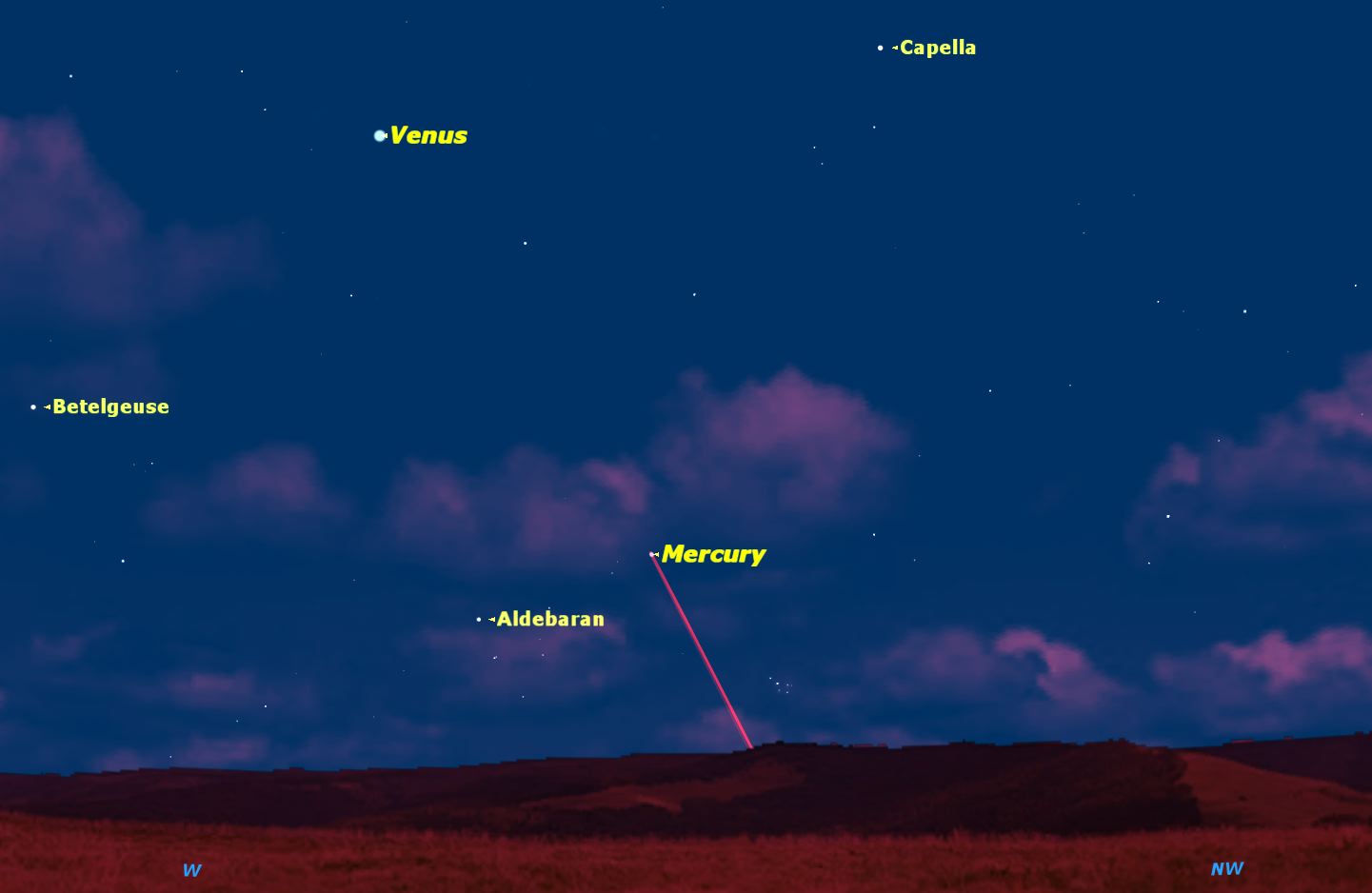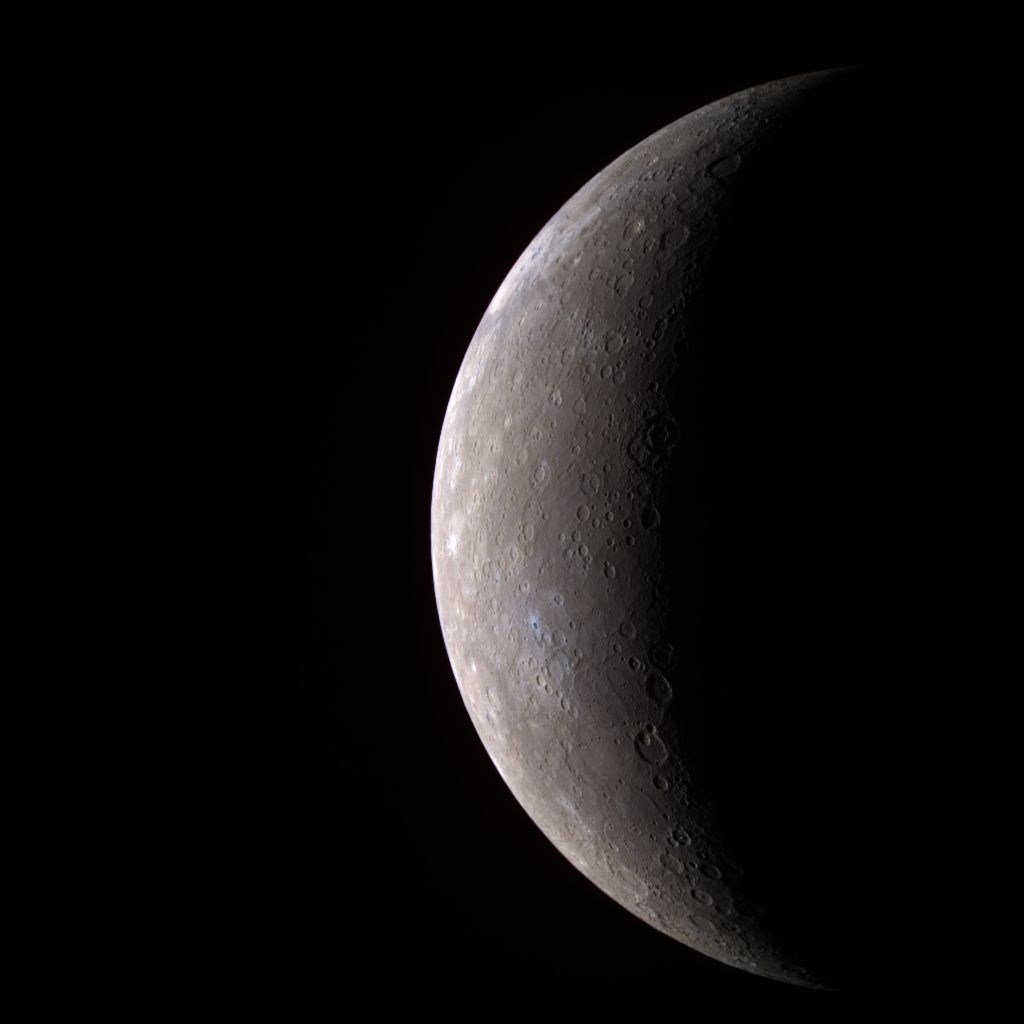Now Is the Best Time to See Mercury in the Night Sky This Year

The next week will be your best chance to spot Mercury this year.
Mercury is the smallest of the eight planets (thanks to Pluto's demotion). With a diameter of 3,032 miles (4,879 kilometers), it is slightly more than a third of the diameter of Earth, and smaller than the solar system's two largest moons, Ganymede and Titan.
But its size is not the only characteristic working against it. Because of its tight orbit around the sun, Mercury never strays far into the night sky, peeping tantalizingly over the horizon a few times a year. [Astronomy Gear Guide: Tools and Tips to Get Started]
Timing is the secret for catching sight of Mercury. The elusive planet is usually only visible for a small window of time. But try too early, and its tiny speck of light will be lost against the twilight sky. Try too late, and Mercury will be too close to the horizon. I've found the best time to be about half an hour after sunset. Binoculars are helpful in initially spotting the tiny planet, but once located in binoculars you should be able to see it with the unaided eye.
Currently Venus is shining brightly in the evening sky, and it can be a helpful guide to spotting Mercury, which is about two-thirds of the way down towards the horizon, and slightly to Venus's right. Don't confuse it with nearby Aldebaran, which will have a noticeably reddish color and will probably twinkle, while Mercury shines with a more steady light.

In a telescope, Mercury is a disappointing sight. Like Venus, Mercury exhibits phases as it passes between us and the sun. For the next week it will assume a crescent shape.
Because Mercury is always seen close to the horizon, it is a challenge to see its surface markings, even in a powerful telescope. Serious observers of Mercury prefer to observe it in the daytime sky, now relatively easy to do with computerized telescopes. But always be very careful when observing with the sun above the horizon, because even the briefest view of the sun in a telescope will do permanent harm to your eyes.
Get the Space.com Newsletter
Breaking space news, the latest updates on rocket launches, skywatching events and more!
Editor's note:If you snap an amazing photo Mercury and would like to share them with Space.com for a story or gallery, let us know! Send photos and comment in to: spacephotos@space.com.
This article was provided by Simulation Curriculum, the leader in space science curriculum solutions and the makers of Starry Night and SkySafari. Follow Starry Night on Twitter @StarryNightEdu. Follow us @Spacedotcom, Facebook and Google+. Original article on Space.com.
Join our Space Forums to keep talking space on the latest missions, night sky and more! And if you have a news tip, correction or comment, let us know at: community@space.com.

Geoff Gaherty was Space.com's Night Sky columnist and in partnership with Starry Night software and a dedicated amateur astronomer who sought to share the wonders of the night sky with the world. Based in Canada, Geoff studied mathematics and physics at McGill University and earned a Ph.D. in anthropology from the University of Toronto, all while pursuing a passion for the night sky and serving as an astronomy communicator. He credited a partial solar eclipse observed in 1946 (at age 5) and his 1957 sighting of the Comet Arend-Roland as a teenager for sparking his interest in amateur astronomy. In 2008, Geoff won the Chant Medal from the Royal Astronomical Society of Canada, an award given to a Canadian amateur astronomer in recognition of their lifetime achievements. Sadly, Geoff passed away July 7, 2016 due to complications from a kidney transplant, but his legacy continues at Starry Night.










